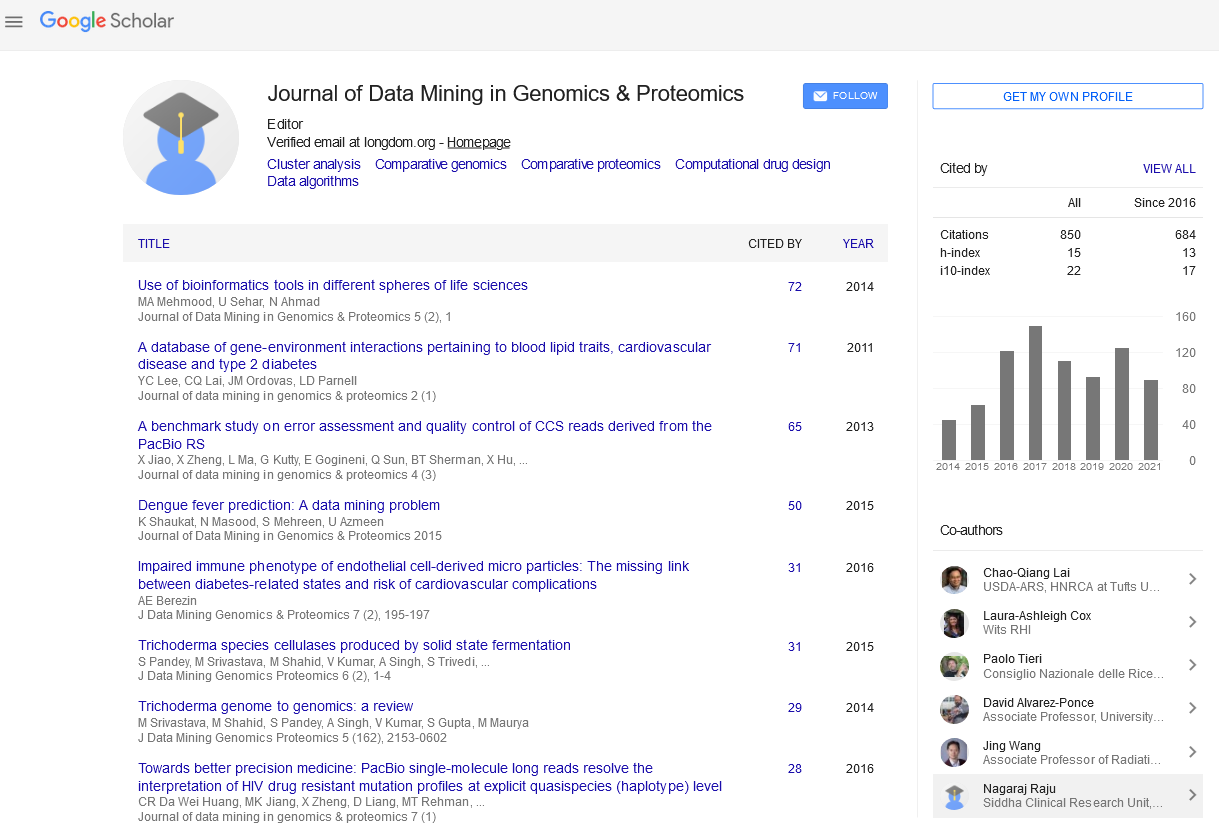PMC/PubMed Indexed Articles
Indexed In
- Academic Journals Database
- Open J Gate
- Genamics JournalSeek
- JournalTOCs
- ResearchBible
- Ulrich's Periodicals Directory
- Electronic Journals Library
- RefSeek
- Hamdard University
- EBSCO A-Z
- OCLC- WorldCat
- Scholarsteer
- SWB online catalog
- Virtual Library of Biology (vifabio)
- Publons
- MIAR
- Geneva Foundation for Medical Education and Research
- Euro Pub
- Google Scholar
Useful Links
Share This Page
Journal Flyer

Open Access Journals
- Agri and Aquaculture
- Biochemistry
- Bioinformatics & Systems Biology
- Business & Management
- Chemistry
- Clinical Sciences
- Engineering
- Food & Nutrition
- General Science
- Genetics & Molecular Biology
- Immunology & Microbiology
- Medical Sciences
- Neuroscience & Psychology
- Nursing & Health Care
- Pharmaceutical Sciences
Abstract
Analysis and Mutation of Codon in rpoB and katG Genes and Bioinformatics Study of RIF Binding Model by RNA β Polymerase Subunit: Study in Tuberculosis Patients at Merauke General Hospital-Indonesia
Kawulur HSI and Ngili Y
Treatment of TB patients is usually done by administering three types of antituberculosis drugs with the main options being Rifampin (RIF) and Isoniazid (INH), then accompanied by streptomycin or pyrazinamide. RIF resistance is attributable to the mutation of the rpoB gene, the gene that produces the RNA polymerase β-subunit, and the INH resistance is largely due to the mutation of the katG gene. The aim of this study was to obtain information on the association of MDR-TB with related genes, as well as information on the combination of Mycobacterium tuberculosis genotype in tuberculosis patients in Merauke. Here we reported that most of the MDRTB isolates are resistant to other antituberculosis drugs, and the mutation frequency of rpoB526 and rpoB531 (mutations that occur on both sides/this place almost always occur together) is almost the same but the katG315 mutation is present in only 16 isolates (the number of mutations that occur in katG315 is less than in rpoB526 and rpoB531). The presence of C1363A nucleotide changes in sensitive Mycobacterium tuberculosis of six antituberculosis drugs showed that not all rpoB mutations caused resistance. On the basis of this phenomenon, it can be proposed that the mechanism of formation of MDR-TB strains begins with a rpoB mutation followed by a mutation of katG. This study demonstrates that the mechanism of resistance to a drug that affects only one gene, such as rifampin that affects rpoB, is more easily controlled than antituberculous drugs affecting several genes, such as isoniazid which affects other genes besides katG.


